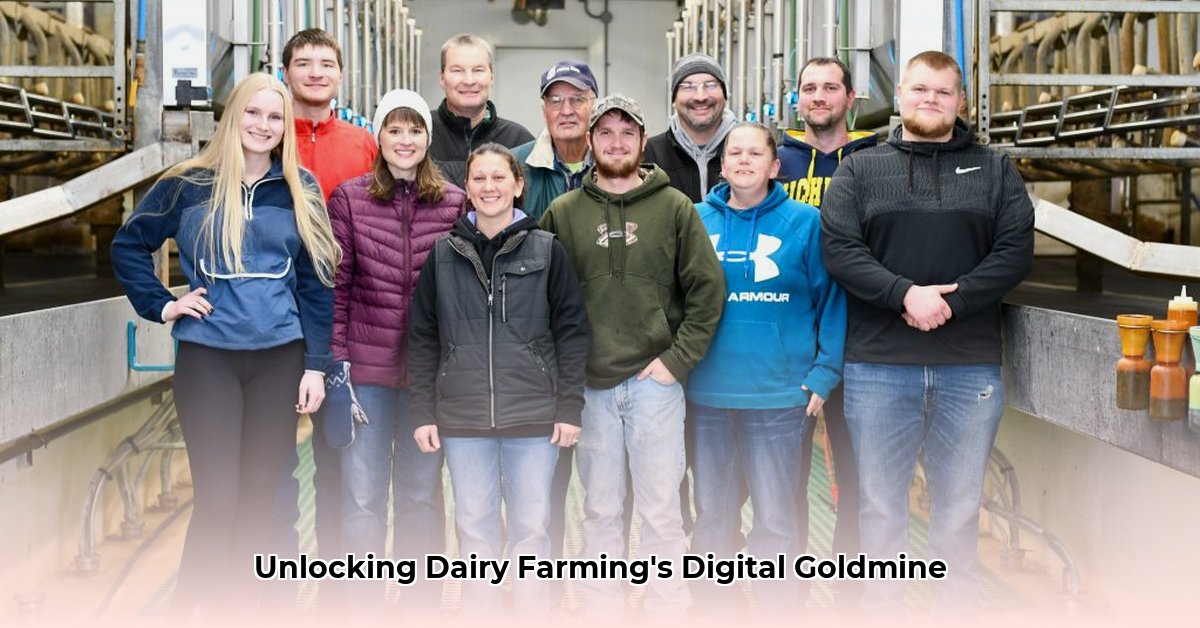
Eric Weaver, a tenth-generation dairy farmer, isn't just milking cows; he's milking the power of digital media to build a multi-faceted, multi-million dollar business. This case study explores his unique journey, blending traditional farming with modern online marketing, and analyzes the risks and rewards of this innovative approach. It’s a story that offers valuable lessons for farmers, businesses, and anyone interested in the future of sustainable agriculture.
From Cows to Cameras: A Family Legacy Reimagined
For generations, the Weaver family has cultivated their land, building a deep-rooted tradition in dairy farming. But Eric, recognizing agriculture's evolving landscape, saw an opportunity to connect directly with consumers and build a more resilient business. This led him to leverage the power of YouTube, a move that has transformed his family legacy. He didn't just document farm life; he built a community. His videos, showcasing the daily realities of sustainable dairy farming, organically attracted an audience eager to learn and connect. "It wasn't a hobby; it was a strategic decision to diversify income and build a more direct relationship with our customers," Eric later explained.
How did he build such a following? This initial organic growth wasn't accidental. Eric strategically invested time in high-quality content, providing consistent uploads that resonated with a growing audience interested in sustainable practices and the authentic story behind their food. Isn't it fascinating how a simple camera can transform a family farm, building more than just a business but a community? His dedication to high-quality content laid the groundwork for his subsequent success, showcasing the power of organic growth in the digital age.
The Digital Dairy: Diversifying Income Streams
Today, Eric's YouTube channel boasts hundreds of thousands of subscribers, generating a significant monthly income. While precise figures remain private, estimates suggest a substantial contribution to his overall net worth, supplementing traditional dairy farming income. This isn't just about advertising revenue; it includes merchandise sales and sponsorships from companies aligned with his sustainable farming practices. This multi-faceted income dramatically demonstrates the potential of digital marketing to revolutionize low-margin industries like agriculture. Could this be the future for other family businesses?
Untangling the Net Worth: A Complex Equation
Pinpointing Eric's precise net worth proves challenging. Publicly available data offers estimates ranging from well over a million dollars, primarily attributed to the farm and personal assets. However, these figures often omit the substantial value generated by his YouTube channel, merchandise, and sponsorships. His total assets represent a blend of traditional agricultural wealth and innovative digital revenue streams, creating a far more complex financial picture than a single number can convey. What this reveals is the growing importance of non-traditional revenue streams in modern business models, particularly in sectors like agriculture once considered low-margin income producers.
Sustainability and Scalability: Navigating the Risks
While Eric's success is inspiring, the long-term sustainability and scalability of his model demand a careful analysis. His digital income is inherently tied to YouTube's algorithms, audience engagement, and the ever-changing digital landscape. Algorithm changes, declining viewership, or shifts in audience preferences could significantly impact his income. Furthermore, he remains vulnerable to the inherent risks of traditional farming—unpredictable weather patterns, disease outbreaks within his herd, and fluctuating market prices. The question remains, how can other farmers replicate this success, while mitigating these significant risks?
Direct replication isn't feasible for all farmers. Scaling this model requires substantial resources, technical expertise, and consistent, high-quality content creation – resources often limited for smaller farms. The crucial lesson here is the need for diversification and proactive risk management. Experts suggest further research is needed to determine the broad applicability and long-term viability of this blended model.
Actionable Insights: A Roadmap for Success
Eric's journey provides valuable lessons for a wide range of stakeholders:
Farmers: Embrace digital marketing to diversify incomes and connect directly with consumers. Invest in high-quality content showcasing your expertise and values. Build a strong, authentic brand identity.
Businesses: Leverage agricultural influencers like Eric to reach new markets and connect with environmentally-conscious consumers. Explore technologies enhancing farming efficiency and sustainability. Invest in the future of sustainable agriculture.
Investors: Critically assess the risks and opportunities in farms integrating digital marketing. Consider impact investments in sustainable agriculture, acknowledging financial and environmental returns.
Government Agencies: Provide resources and support for farmers adopting digital marketing. Ensure rural broadband access to facilitate digital participation in agriculture.
Managing the Risks: A Proactive Approach
Eric's success highlights the importance of proactive risk mitigation. The following outlines key risks and mitigation strategies:
| Risk Category | Likelihood | Impact | Mitigation Strategy |
|---|---|---|---|
| Algorithm Changes (YouTube) | Medium | High | Diversify online presence (other platforms, email list, etc.) |
| Audience Fluctuation | Medium | Medium | Consistent, high-quality content; active audience engagement |
| Competition | Low | Medium | Strong brand identity; focus on a unique niche market |
| Sponsor Dependence | Low | Low | Multiple sponsors; development of own merchandise lines |
| Farm-Specific Risks | High | High | Farm diversification; comprehensive risk management (insurance, etc.) |
Conclusion: A Legacy of Innovation and Resilience
Eric Weaver’s story transcends a simple financial success narrative. It’s a testament to adaptability, innovation, and the transformative power of digital tools in agriculture. His journey highlights the necessity for farmers to embrace new technologies and marketing strategies to build sustainable and resilient businesses. While his success is inspiring, the inherent risks involved underscore the importance of careful planning, diversification, and a robust risk management strategy. His story marks the beginning of a new era in farming, setting a compelling example for future generations.